Temperature represents an all-pervading factor in an organism’s life. For example, despite having vastly different nesting habitats, the bald eagle and dove pictured below will still experience some degree of temperature, which in turn will influence their physiology and behavior.

Very often, when scientists want to uncover the effects of temperature on a species, they will use air temperature data derived from weather stations. These air temperature data may be obtained from portable, self-owned weather stations or from spatially coarse, gridded climate data that is publicly available (e.g., climate data available through WorldClim, http://www.worldclim.org/). Although freely available data represents a convenient source of information, they unfortunately are often inappropriate when attempting to model the impacts of temperature on an animal due to their coarse spatial resolution (e.g., 1 km2). In reality, organisms experience temperature at spatial scales relative to their body size. As a result, organisms do not experience climate at the macroscales typical of most air temperature data but instead experience microclimates. These microclimates form through a complex interaction between air temperature, solar and thermal radiation, wind and humidity. To complicate matters more, two separate species may experience the same microclimate differently due to their unique physical attributes, such as size, shape and color. The combination of abiotic parameters characterizing a microclimate and the physical properties of an individual culminates into a heat index value known as the operative environmental temperature (or simply operative temperature). Put another way, operative temperature is the temperature of the environment as perceived by that animal and is a much more accurate representation of the heat load placed upon an organism than air temperature alone. Unfortunately, properly quantifying how animals perceive their microclimate can be a difficult task.
Perhaps the most accurate (and definitely the most complicated) method to quantify an animal’s heat load is mathematically through an energy budget analysis. This method is very complex and demands a faculty in mathematics and physics of which most trained biologists do not possess (myself included!!). To illustrate my point, I will breakdown one component of an energy budget analysis. This example is taken from the pioneering study by Porter and Gates (1969). The basic formula of the energy budget is:

and put into biological terms becomes:

Each of these terms are complex in and of themselves and I am not going to delve into each of them. However, I will concentrate on Qabs, which represents the amount of radiation absorbed by the animal surface. To estimate this parameter accurately, one needs to know the intensities and spectral composition of all forms of radiation (Ri), the various surface areas of the animal (Ai), and the mean absorptivity’s of the animal’s surface to various incident fluxes ((ai ̅). Thus, total radiation absorbed by an animal surface with surface area A becomes:

Are you confused yet?! My point here is simply that although energy budget analyses are extremely useful and very valuable, they can also be incredibly daunting and confusing for someone not trained in biophysics.
Luckily, there is another method that inherently incorporates the components of an energy budget analysis without needing to measure and calculate umpteen parameters. This alternative method uses a taxidermic mount of the animal either painted to match the reflectance and absorbance of its surface (e.g., if a reptile) or covered with the integument and fur or feathers (e.g., if a mammal or bird). These taxidermic mounts are then put out at known locations within an animal’s habitat. Because these taxidermic mounts mimic the size, shape and color of the focal animal, they will provide the operative temperatures experienced by that animal under a given microclimate. Essentially, they are operative temperature thermometers.
To provide an example, during my PhD I measured the operative temperatures experienced by Rufous-cheeked Nightjars (Caprimulgus rufigena) at their roosts and one nest site. Rufous-cheeked Nightjars are a nocturnal species of bird found in southern Africa. During the day these birds will roost on the ground, often in unshaded spots where they experience full solar radiation and potentially high operative temperatures.
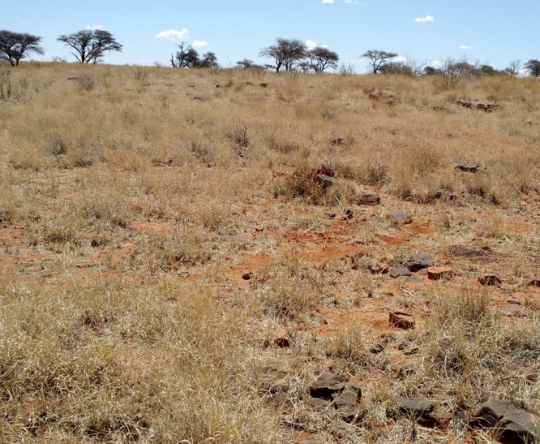
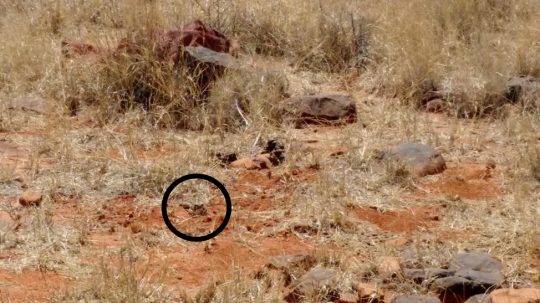
These photos are of an incubating Rufous-cheeked Nightjar in Kimberley, South Africa. The bottom picture is a zoomed in version of the top photo with the nightjar circled.
I constructed two types of operative temperature thermometers: one that was a three-dimensionally (3-D) printed plastic model and one that was a 3-D plastic body covered with the skin and feathers of a Rufous-cheeked Nightjar. Inside each of these models was a temperature sensor that recorded temperature in one-minute intervals. I also recorded air temperature at one-minute intervals using a portable weather station that I placed in the immediate proximity of my models. Below are pictures of each model set out at a known roost site.
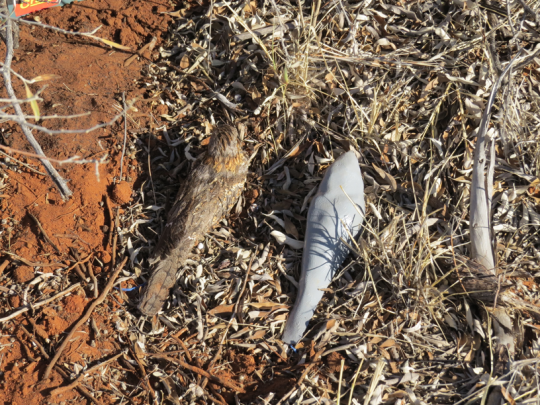

I found that average operative temperatures at the roost sites and the one nest site consistently exceeded air temperature. At roost 1, for example, average operative temperature during midday was 50 C and reached a maximum of 65.6 C!

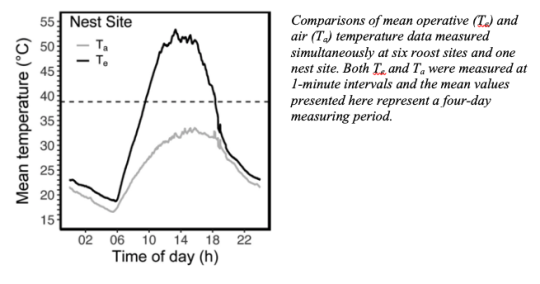
When these operative and air temperature data are incorporate into physiological models of Rufous-cheeked Nightjar evaporative water loss rates, it reveals how vastly different physiological estimates can be depending on your temperature variable.
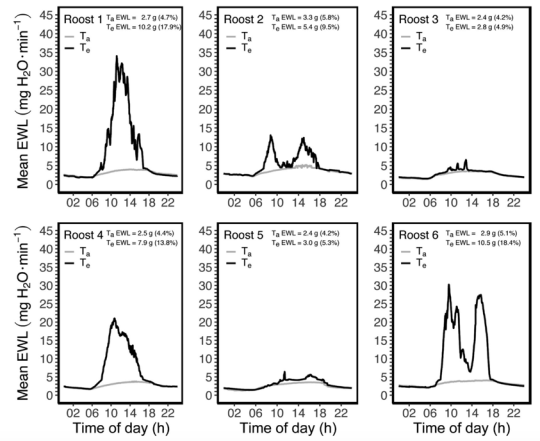
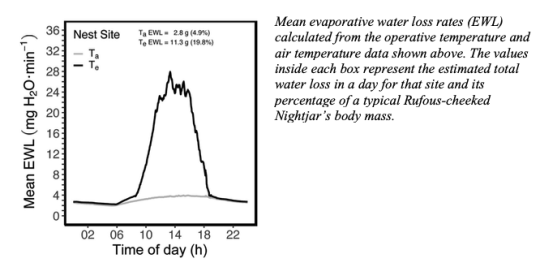
In summary, the heat load acting upon an animal stems from an interaction among the abiotic parameters of the environment and the physical attributes of the animal itself. This leads to a unique perception of the thermal environment wherein individuals experience disparate operative temperatures. How animals perceive their environment can be calculated mathematically via an energy budget analysis or through the construction of taxidermic mounts that mimic the size, shape and color of the focal animal. However, I want to note that my main point here is not to discredit air temperature as an important climatic parameter impacting an animal’s biology. I am just revealing how air temperature is only one component of an animal’s thermal environment and investigators should consider this when making claims about how animals respond to temperature. Unfortunately, it isn’t always as simple as measuring air temperature.

Ryan O’Connor is a QCBS postdoctoral fellow at the Université du Québec à Rimouski in the laboratory of Dr. François Vézina. Ryan became interested in microclimates and how animals thermally perceive their environment during his PhD in South Africa where he worked on the heat tolerance and thermal physiology of two nocturnal bird species. Results from his work and more information on his research interests can be found on his Google Scholar page and his personal webpage.

0 Comments